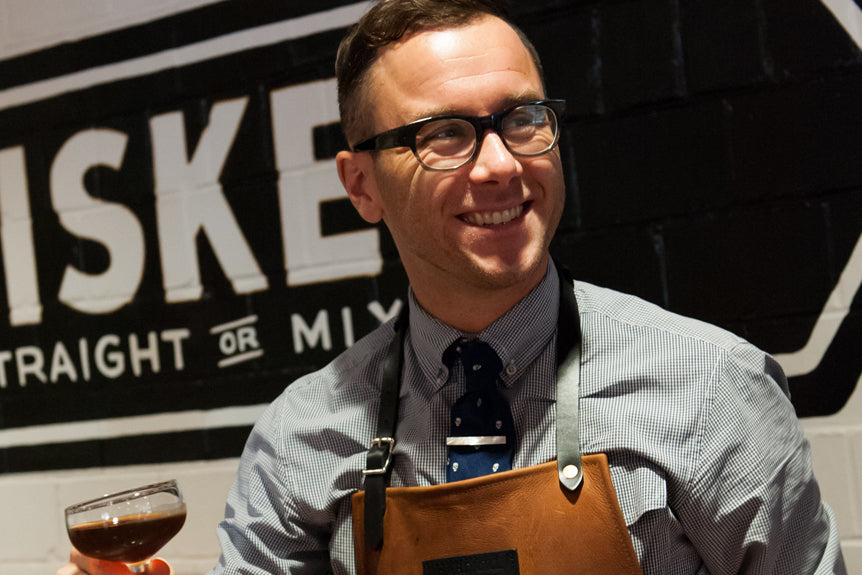Just in time for Derby entertaining, an industry expert shares his best tips for taking your home bartending skills to the next level.
The craft-cocktail "movement" may have given rise to artisanal ice and the $17 martini, but it's also brought the focus back around to stripped-down drinks made with premium ingredients, fresh juices and a lot of love and care.
And you can do it right at home.
Josh Durr, founder of the Louisville-based Hawthorn Beverage Group and a past president of the Kentucky chapter of the United States Bartenders Guild, shares these tips for mixing a great cocktail.

Invest in quality ingredients.
To be ready for any occasion, you could build a fully stocked bar consisting of vodka, gin, rum, tequila, brandy, scotch and bourbon. But the costs add up quickly, especially when buying premium brands.
You might be better served by focusing your selection around a preferred type of booze — everything you'll need to make classic bourbon-based cocktails, for example — and experimenting with several brands to find what you like.
"The customization of your home bar should be focused on what you, your significant other and close friends like to drink," Durr says. "Just make sure that you're using high-quality base spirits."
After all, your drinks will only taste as good as the ingredients that go into them.
Fresh is best.
"Fresh juices, always and forever," Durr says.
Durr also recommends double straining fresh-squeezed juices to remove the pulp, which not only helps keep it fresh but also improves the consistency of your drinks.
When refrigerated, lemon and lime juice will remain fresh for 24 hours, while orange, pineapple and grapefruit juices last for two to three days max, he says.
Fresh juices, always and forever.
You should also refrigerate aromatised wines, like vermouth and vino amari, after opening to keep them in top shape.
"If you're making Manhattans and they seem to be getting worse every time you make them, it's because your vermouth has gone bad," Durr says.
Know when to shake and when to stir.
In general, stir cocktails made with all spirits, such as Manhattans and martinis, and shake cocktails that contain citrus, such as daiquiris and margaritas. You're goal is to incorporate ingredients with different densities when you shake a cocktail, and chill it down without diluting it when stirring.
Either way, always add the ingredients first and then the ice to better control dilution.
Bigger is better.
Speaking of ice, bigger is better when it comes to chilling a drink without watering it down.
"We can talk about the clarity of the ice, but it's really pretty simple — you're just freezing water," Durr says. "But you do want something that's got density and surface area, because density is how you chill things."
Durr recommends using small Tupperware containers to make larger chunks of ice, and always keeping a stock in your freezer ready to go.
"Controlled dilution is paramount," he says.
Get the 2:1:1
Learning a few simple proportions will go a long way toward improving your home bartending skills. And, for many cocktails, there's only one you need to know — 2:1:1. That's two parts liquor to one part tart and one part sweet (although some prefer their cocktails a little stronger to let the base spirit shine through).
"For a sour, a 2 oz. base with .75 oz. juice and .75 oz. simple syrup is a good place to start," Durr says. "Add soda and that's a Collins or a Daisy. Add a dash of liqueur and that's a modified Collins. Add ginger syrup or ginger beer and that's a buck or a mule."
From there you can experiment with split-base cocktails — using two different liquors or brands as your base — or substituting one ingredient for another in what Durr refers to as the "Mr. Potato Head" approach. You can also scale the proportions and batch cocktails when entertaining a larger group.
It's all about proportion and balance.
Click here for classic bourbon-based cocktail recipes from 'How to make Kentucky Famed Drinks,' and find great Bourbon Gear in the shop, including this Classic Bourbon Cocktails print by Rachael Sinclair!


